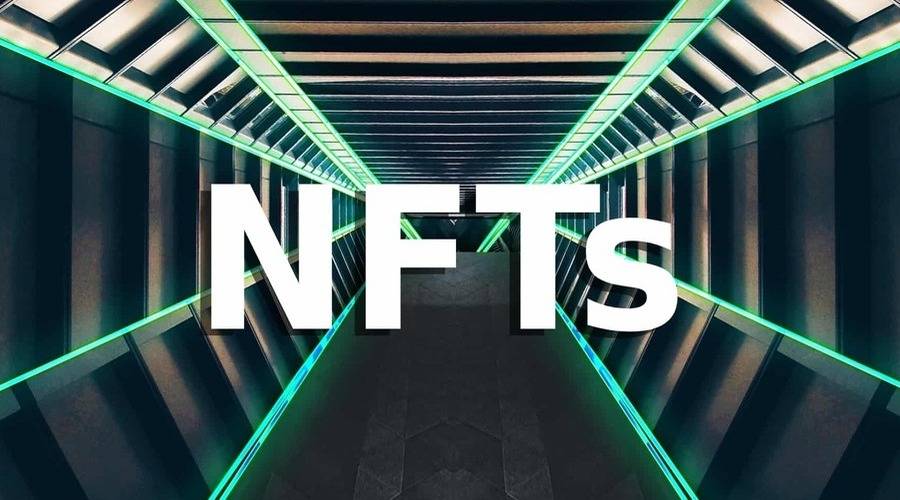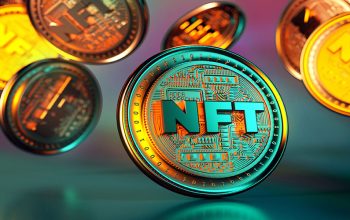With the rise of blockchain technology, non-fungible tokens (NFTs) have emerged as a revolutionary form of digital assets. Unlike cryptocurrencies, which can be exchanged on a one-to-one basis, Non-Fungible tokens represent unique ownership of a digital item, be it artwork, music, collectibles, or virtual real estate. As NFTs gain popularity and recognition, the need for decentralized governance and decision-making becomes increasingly important.
Non-Fungible Tokens
Non-Fungible tokens, are digital assets that utilize blockchain technology to establish ownership and provenance. Each NFT is distinct and cannot be exchanged on an equal basis with other tokens. This uniqueness is what makes Non-Fungible tokens highly valuable in the digital world. In recent years, NFTs have gained significant attention and have become a part of mainstream culture.
Decentralized governance plays a vital role in ensuring the credibility and legitimacy of NFTs. By removing central authorities and intermediaries, Non-Fungible tokens allow for a peer-to-peer system of ownership and control. This article will explore the importance of decentralized governance and decision-making in the NFT space.
Understanding Decentralized Governance
Decentralized governance refers to a system where decision-making power is distributed among a network of participants rather than being concentrated in the hands of a single entity or organization. In the context of NFTs, decentralized governance ensures that the community of token holders has a say in determining the rules, regulations, and future direction of the ecosystem.
One of the key advantages of decentralized governance is the elimination of single points of failure. In traditional systems, decisions are often made by a central authority, which can be prone to corruption, bias, or inefficiency. By distributing decision-making power, decentralized governance promotes transparency, accountability, and inclusivity.
Blockchain technology, the underlying technology behind NFTs, plays a crucial role in enabling decentralized governance. With its decentralized and immutable nature, blockchain provides a secure and transparent platform for recording ownership, transactions, and voting processes.
NFTs and Decentralized Decision-Making
In traditional systems, decision-making processes related to ownership, distribution, and usage of digital assets are typically centralized. This centralized control can lead to limitations and challenges, such as lack of transparency, unfair practices, and limited participation.
In contrast, NFTs empower creators and users by allowing them to participate in decision-making processes. Token holders can influence the direction of the NFT ecosystem through voting mechanisms, community discussions, and proposals. This decentralized decision-making ensures that the NFT ecosystem evolves in a way that aligns with the interests and values of its participants.
Decentralized Governance Models for NFTs
Here are some common decentralized governance models for NFTs:
- Token Voting: This model grants voting power to token holders. Each token represents a certain amount of voting power, allowing holders to participate in decision-making processes. Proposals related to platform upgrades, fee structures, or changes in governance protocols are voted upon by token holders.
- Liquid Democracy: Liquid democracy combines direct and representative voting. Token holders can either vote directly on proposals or delegate their voting power to representatives. Delegation allows participants to entrust their voting rights to individuals or entities they trust, ensuring broader participation and expertise in decision-making.
- Decentralized Autonomous Organizations (DAOs): DAOs are self-governing entities run by smart contracts. Token holders in a DAO have voting power proportional to their token holdings. DAOs enable community members to propose and vote on initiatives, allocate funds, and govern the platform’s development. They often have treasury systems that allocate funds for various purposes, such as ecosystem development, marketing, or grants.
- Prediction Markets: Prediction markets utilize the wisdom of the crowd to make decisions. Token holders can trade tokens representing different outcomes of a proposal. The market price of each outcome reflects the collective opinion of participants. The outcome with the highest price becomes the decision. Prediction markets incentivize accurate forecasting and provide an efficient way to gauge community sentiment.
- Futarchy: Futarchy combines prediction markets with traditional voting. In this model, participants use prediction markets to forecast the impact of proposed actions. If the market predicts a positive outcome, the proposal moves forward. Futarchy aims to align decisions with the expected success of different options, using the collective intelligence of the market to guide governance choices.
- Sybil-Resistant Governance: Sybil-resistant governance models aim to prevent manipulation by individuals or entities controlling multiple identities. These models may require participants to prove their unique identities or stake tokens as collateral to participate in decision-making, reducing the influence of malicious actors.
Transparency and Security in NFT Governance

One of the fundamental advantages of blockchain technology is its transparency. All transactions and ownership records are stored on the blockchain, providing an immutable and auditable history of digital assets. This transparency ensures that the governance decisions made within the NFT ecosystem are visible to all participants.
Additionally, the security of NFTs and decentralized governance is enhanced through the use of cryptographic algorithms and consensus mechanisms. Blockchain networks employ robust security protocols to protect the integrity of the system, preventing unauthorized modifications or fraudulent activities.
Potential Applications of NFTs and Decentralized Governance
NFTs have found applications in various industries, including art, gaming, and real estate. In the art world, NFTs enable artists to tokenize their creations, establish provenance, and sell their work directly to collectors. This eliminates the need for intermediaries and opens up new opportunities for artists.
Gaming and virtual worlds have also embraced NFTs, allowing players to own and trade unique in-game items, characters, and virtual real estate. NFTs provide a way for gamers to have true ownership and control over their digital assets, enabling a new level of player empowerment.
NFTs can also revolutionize the real estate industry by facilitating fractional ownership and streamlining property rights. By tokenizing real estate assets, individuals can invest in properties without the need for large capital investments, while also ensuring transparency and traceability in property transactions.
Challenges and Considerations
- Scalability: As NFTs gain popularity, scalability becomes a significant concern. Blockchain networks must be able to handle a large volume of transactions and users without compromising speed and efficiency. Ongoing research and development efforts are focused on finding solutions to improve scalability and enhance network performance.
- Energy Consumption: The environmental impact of NFTs and blockchain technology has raised concerns. The energy consumption required for mining and maintaining blockchain networks needs to be addressed to ensure a more sustainable approach. Efforts are being made to explore energy-efficient alternatives and reduce the carbon footprint of NFT transactions.
- Inclusivity and Accessibility: The decentralized nature of NFTs and governance models should strive for inclusivity and accessibility. Ensuring that participation is open to a diverse range of individuals and communities is essential to prevent the concentration of power and foster a more equitable ecosystem.
- User Experience: The user experience of interacting with NFTs needs improvement. Simplifying the onboarding process, enhancing wallet interfaces, and streamlining transactions will make NFTs more user-friendly and increase adoption among a broader audience.
- Legal and Regulatory Frameworks: As NFTs continue to gain mainstream attention, legal and regulatory frameworks need to keep pace with the evolving landscape. Establishing clear guidelines and regulations will protect participants, prevent fraudulent activities, and provide a framework for resolving disputes in the NFT space.
The Future of NFTs and Decentralized Governance
As technology continues to evolve, NFTs and decentralized governance are likely to play an increasingly important role in various industries. Innovations such as layer 2 solutions, interoperability, and improved scalability will address current limitations and unlock new possibilities for NFT ecosystems.
The mainstream adoption of NFTs will bring about significant changes in how we perceive ownership, value, and digital assets. It has the potential to democratize access to the creative economy, empower artists and creators, and reshape traditional industries.
Opportunities for disruption are vast, and the future of NFTs and decentralized governance holds immense promise. As the technology matures and more people embrace the benefits of blockchain-based ownership, we can expect to see even more innovative use cases and transformative changes.
Conclusion
NFTs have introduced a paradigm shift in how we perceive and interact with digital assets. Decentralized governance and decision-making play a crucial role in ensuring the integrity and evolution of NFT ecosystems. By enabling community participation, transparency, and security, decentralized governance empowers creators, collectors, and users alike.
As NFTs continue to gain traction and explore new frontiers, it is essential to address challenges and considerations such as scalability, inclusivity, and regulatory frameworks. With the right approach, NFTs and decentralized governance have the potential to reshape industries, democratize access, and unlock new opportunities for creators and participants.
FAQs
1. What is the role of blockchain in NFTs?
Blockchain technology provides the infrastructure for NFTs, ensuring transparency, immutability, and secure ownership of digital assets.
2. How do decentralized autonomous organizations work?
Decentralized Autonomous Organizations (DAOs) are self-governing entities run by smart contracts, allowing token holders to participate in decision-making processes.
3. Can NFTs be used for traditional investments?
Yes, NFTs can be seen as alternative investment opportunities, especially in the art and collectibles market. However, it’s important to conduct thorough research and consider the risks involved.
4. Are NFTs environmentally friendly?
The environmental impact of NFTs has been a topic of concern due to the energy consumption of blockchain networks. Efforts are being made to develop more sustainable solutions for NFTs.
5. What are the risks associated with NFT investments?
As with any investment, there are risks involved in NFTs, including market volatility, lack of liquidity, and the potential for fraud. It’s important to do your due diligence and only invest what you can afford to lose.
Pranav is a tech, crypto & blockchain writer based in London. He has been following the development of blockchain technology for several years.




